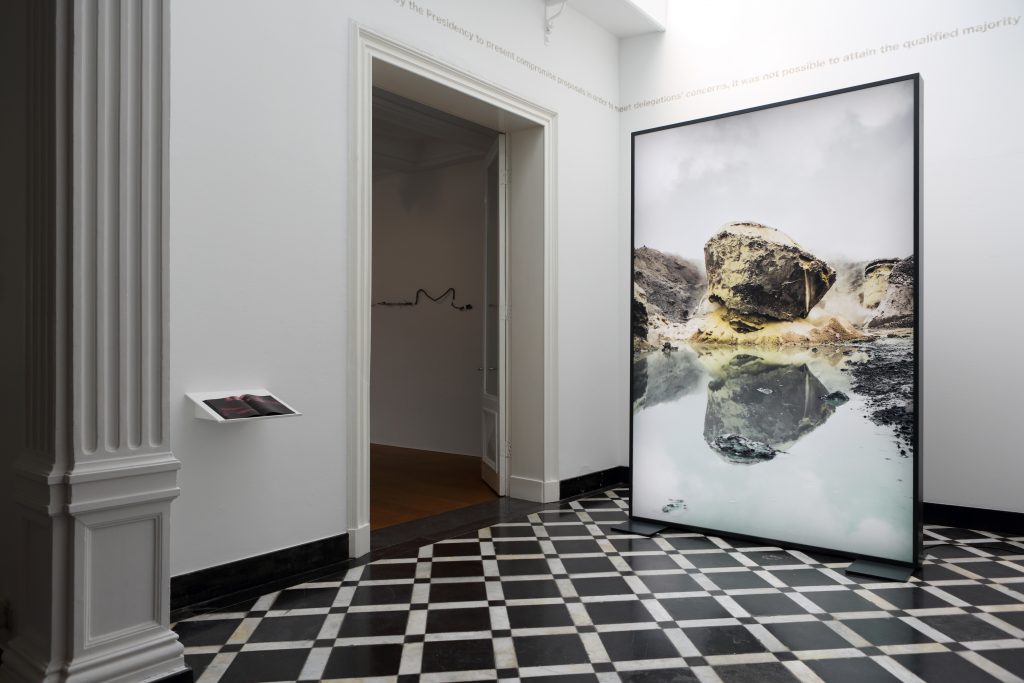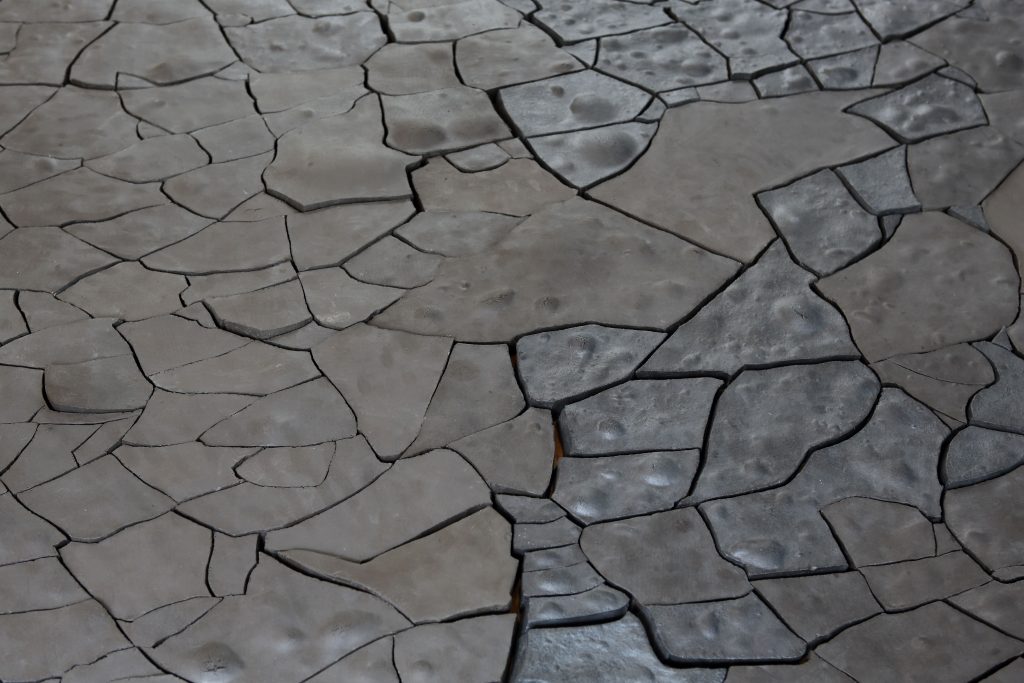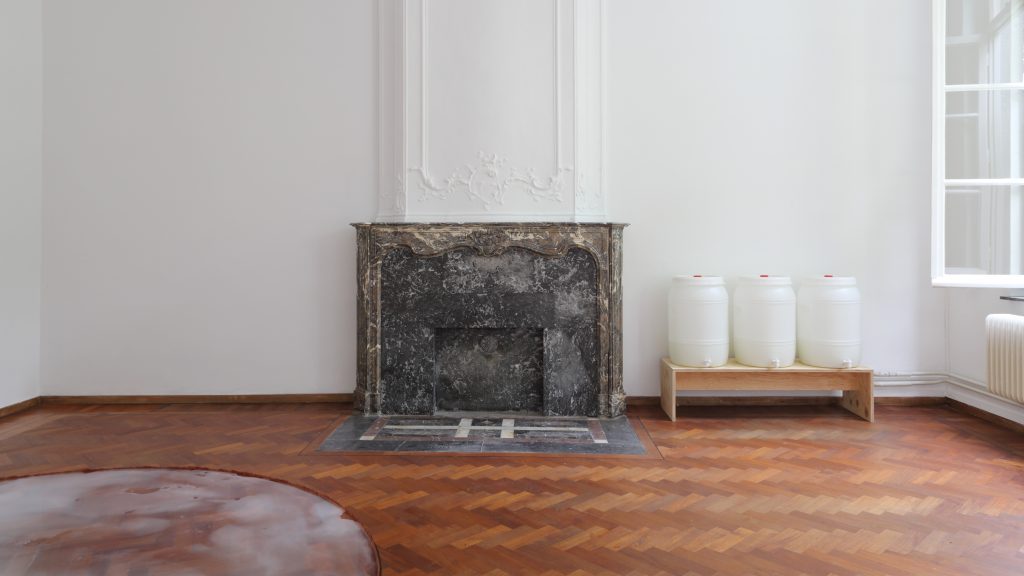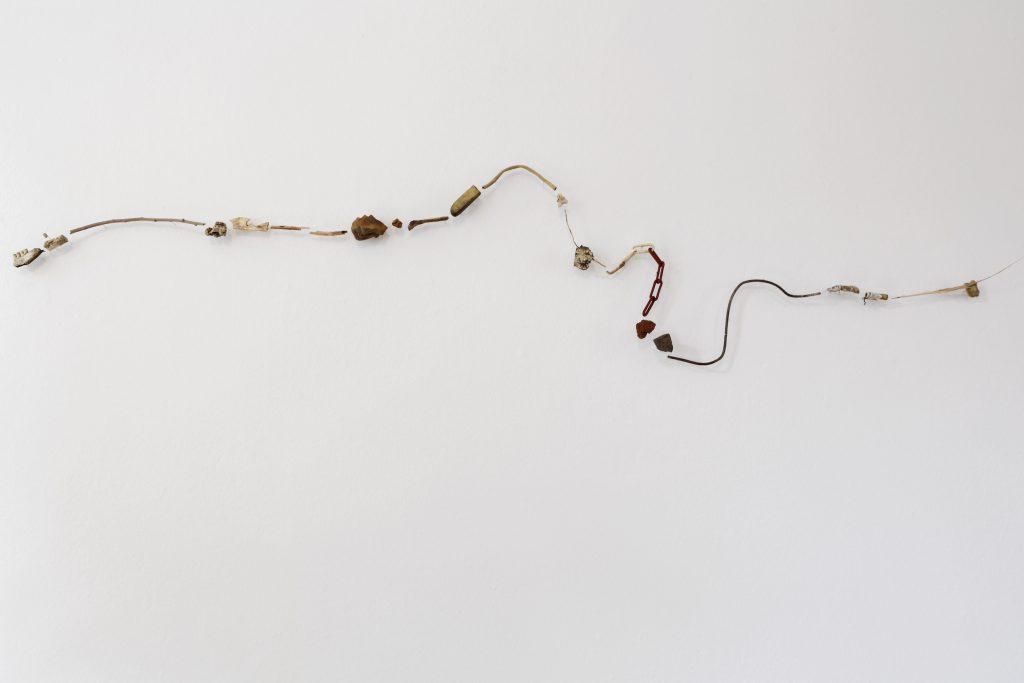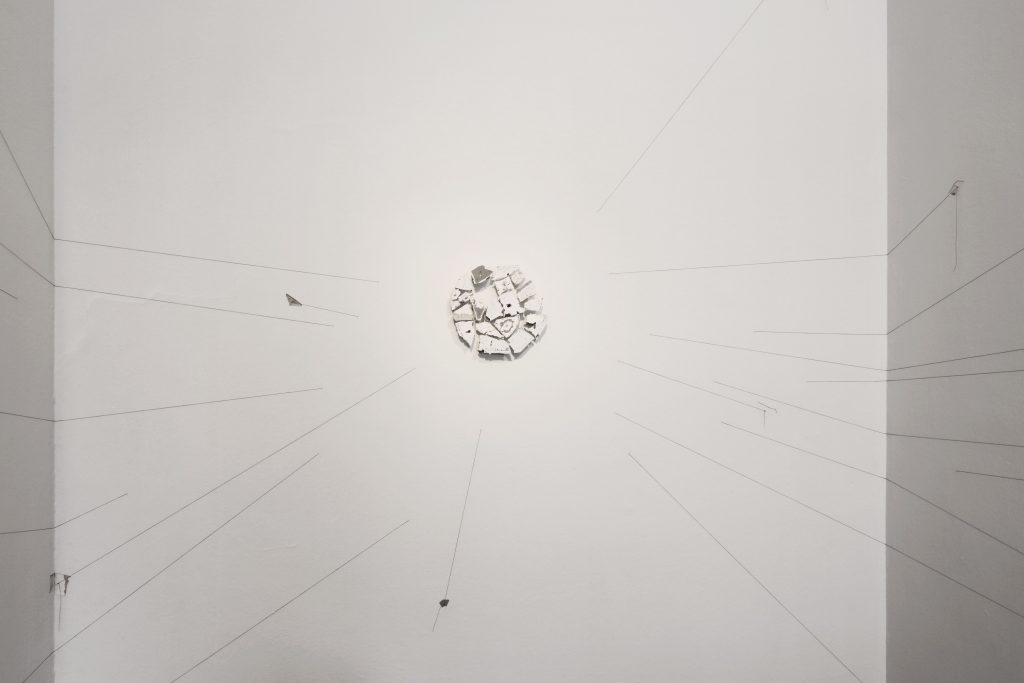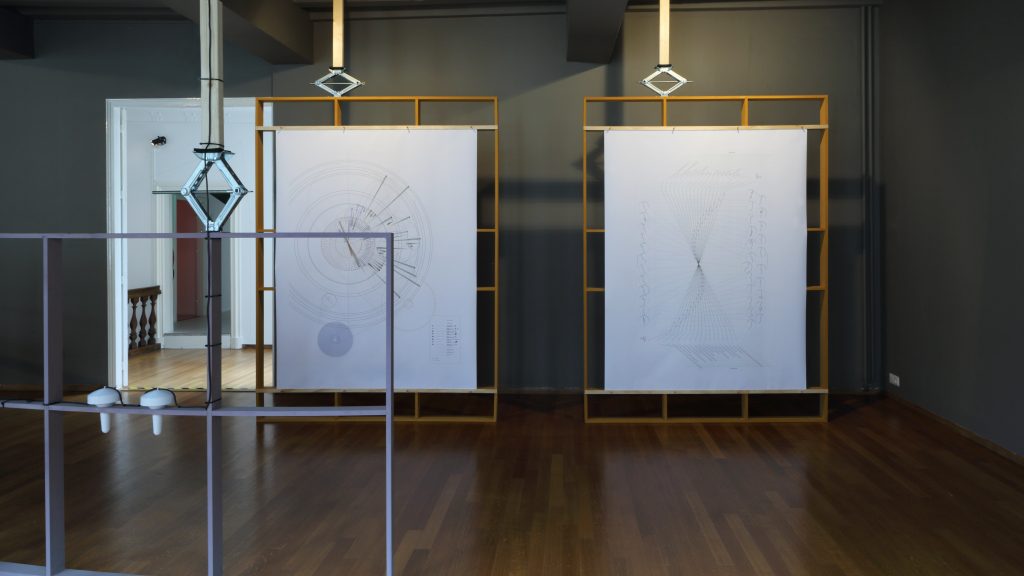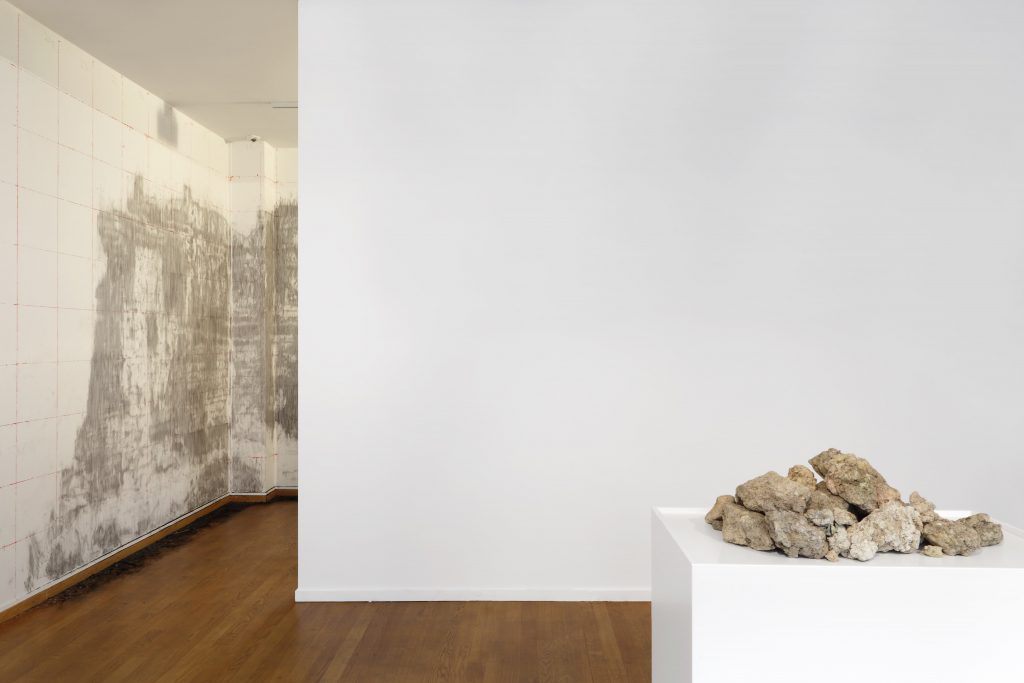
The Materiality of the Invisible approached contemporary art as an activity that shares several characteristics of archaeology.
Curators: Lex ter Braak and Huib Haye van der Werf
Many artists probe the underlying layers of our social and political reality. They expose what is concealed and penetrate to other times. Like archaeologists, they make the invisible visible.
The Materiality of the Invisible showed the results together with the work of 24 other artists. The exhibition spread out over the three locations, Marres, Van Eyck and Bureau Europa. Van Eyck was a partner in the multi-year EU project NEARCH – New scenarios for a community-involved archaeology. For this project, they selected six international artists who each collaborated with two archaeological partners.
The opening of the exhibition on Tuesday 29th of August coincided with the annual meeting of the EAA (European Association of Archaeologists), which took place in Maastricht in 2017.
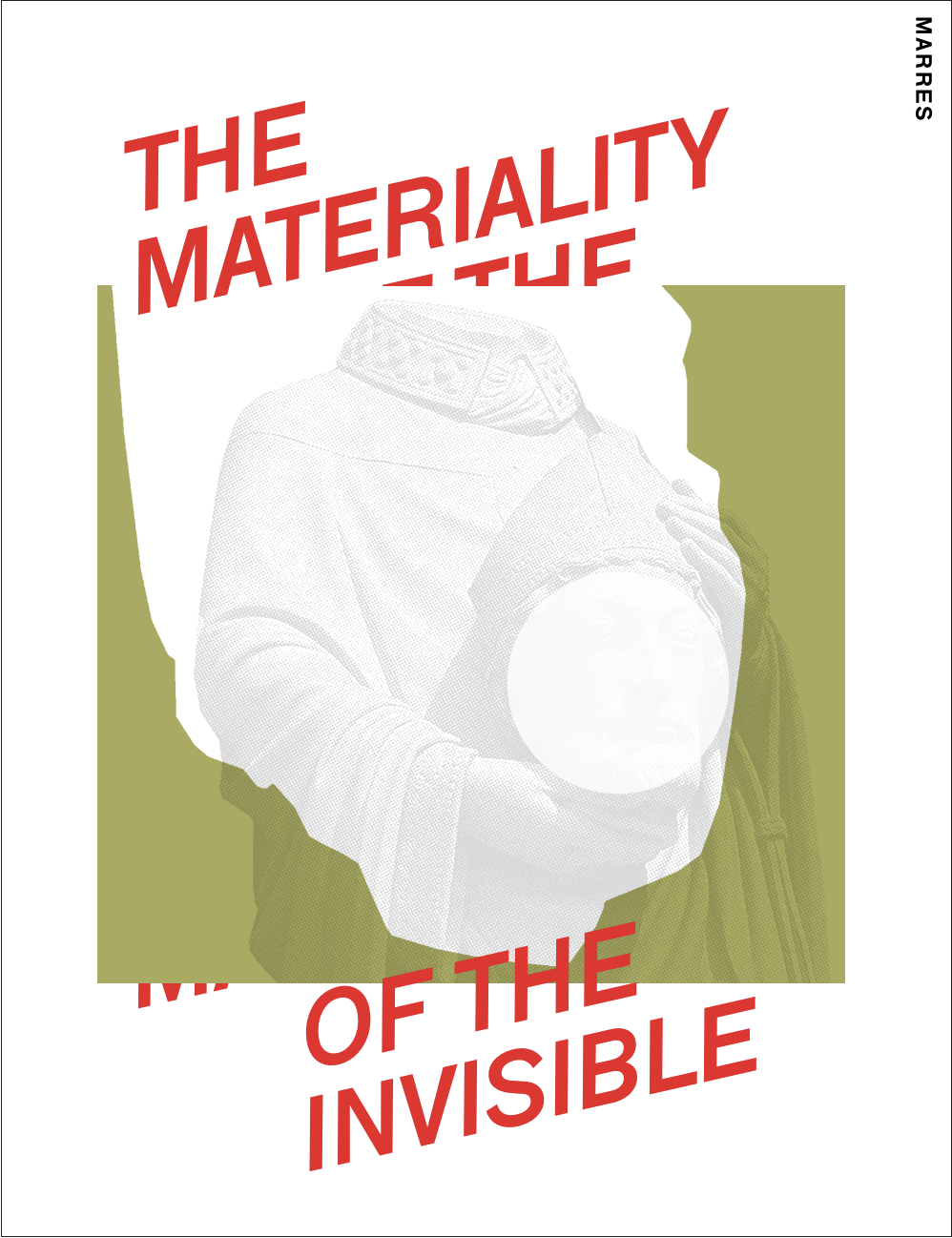
Participating artists
Lida Abdul, Semâ Bekirovic, Rossella Biscotti, Marinus Boezem, Lonnie van Brummelen & Siebren de Haan, Joey Bryniarska & Martin Westwood, Leyla Cárdenas, Ruben Castro, Imran Channa, Iratxe Jaio & Klaas van Gorkum, Mikhail Karikis & Uriel Orlow, Daniel Knorr, Jeroen Kooijmans, Irene Kopelman, Giuseppe Licari, Chaim van Luit, Mark Manders, Alice Miceli, RAAAF, Raewyn Martyn, Stéphanie Saadé, Fernando Sánchez Castillo, Oscar Santillan, Daniel Silver, Studio Ossidiana, Marjan Teeuwen, Leonid Tsvetkov, Maarten Vanden Eynde, Roy Villevoye & Jan Dietvorst, Matthew C. Wilson
Public program
During The Materiality of the Invisible an extensive public program was presented, consisting of lectures, presentations, film screenings and guided tours at the three locations.
Marres hosted and organised the event The Archaeologist, the Artist and the Curator, a walking conversation in the exhibition The Materiality of the Invisible at Marres, dedicated to all affinities between art and archaeology. With Miguel John Versluys (Professor of Classical & Mediterranean Archaeology, Leiden University), Matthew Wilson (artist, NEARCH), Martin Westwood (artist,NEARCH), Lex ter Braak and Huib Haye van der Werf (curators of the exhibition).
Michael Shanks – Archaeologist and Professor of Classics at Stanford University had a conversation with artists and archaeologists involved in the EU project NEARCH – New scenarios for a community-involved archaeology in the framework of the exhibition The Materiality of the Invisible, during an evening Talk.
One of the lectures was presented by Eyal Weizman – architect, professor of spatial and visual cultures and director of the Centre for Research Architecture at Goldsmiths, University of London – and Femke Snelting – artist/designer, developing projects at the intersection of design, feminism and free software. They both spoke about topics related to the framework of the exhibition.
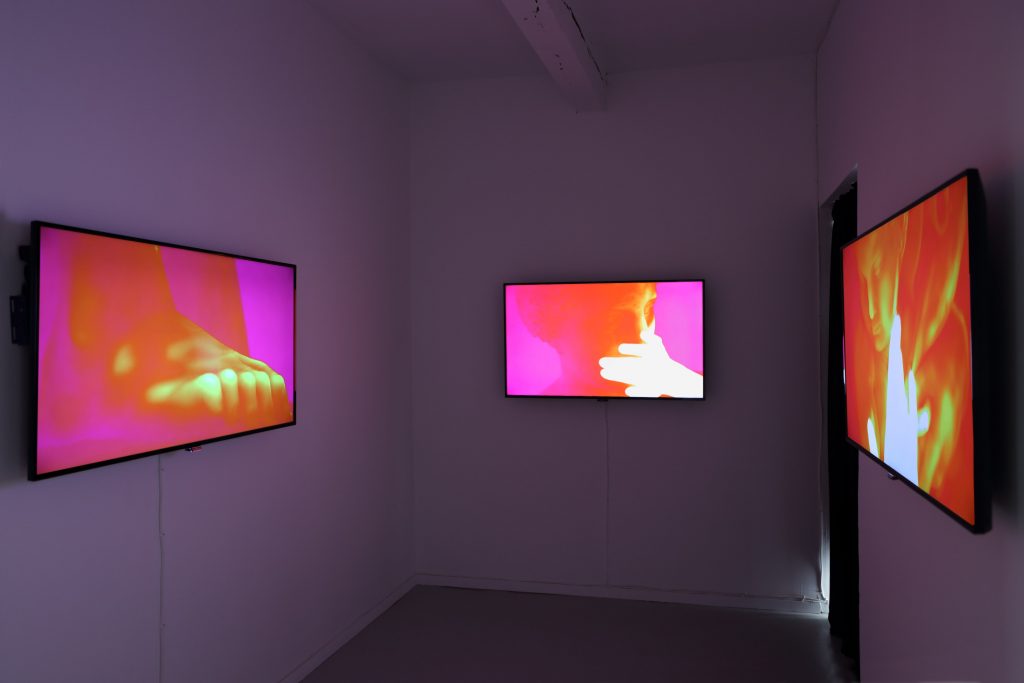
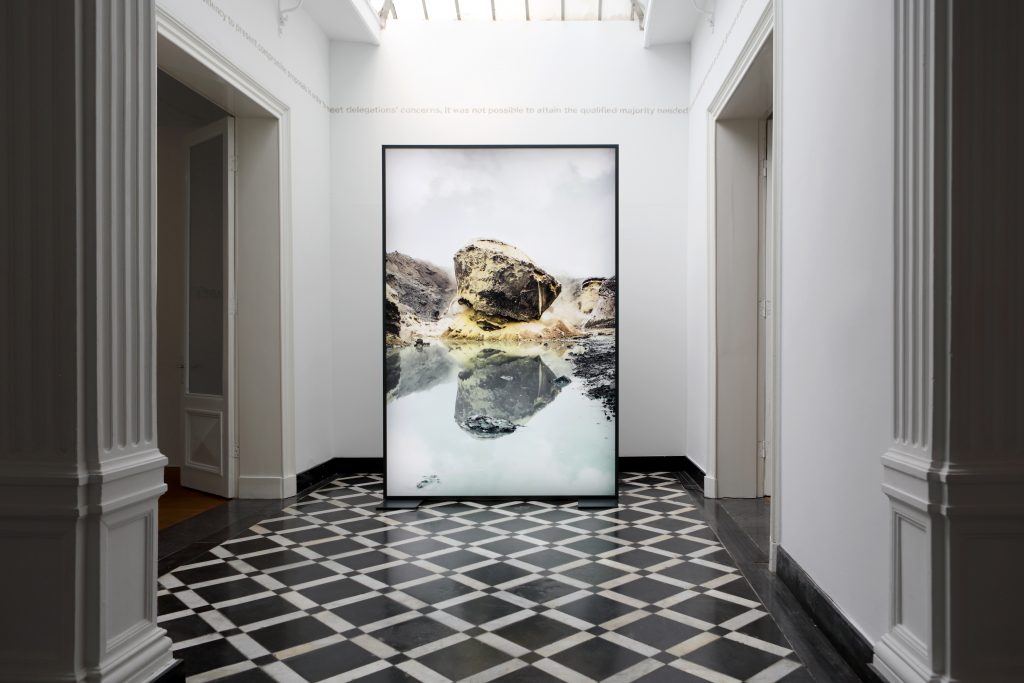
Education
Participating artist Giuseppe Licari played an active role in the educational program of The Materiality of the Invisible. Students from the United World College and IBBO (I Am Conscious Education) worked for six weeks together with artist.
As part of this program, Dion Nataraja, a student at the United World College, interviewed Licari about his art work The Promised Land: a photo series of a misty landscape full of craggy rocks formations in unusual shades. The landscape pictured in the photos has something extraterrestrial, however these pictures are taken in Luxembourg in a former mine. Watch the interview here.
“How do stones feel and what different types are there?” The students made several drawings as a result of these questions. They were then printed on lino in the print lab of the Van Eyck Academie.
During Het Parcours on Sunday 10 September, Marres, Bureau Europa and Van Eyck, opened its doors. The public could visit the exhibition free of charge that day. This year’s edition was named: Een grenzeloos Parcours.
Press about The Materiality of the Invisible
Press
For press requests, imagery and interview requests, please contact Julie Cordewener: julie.cordewener@marres.org.
Thanks to
The European Commission and Mondriaan Fund.
